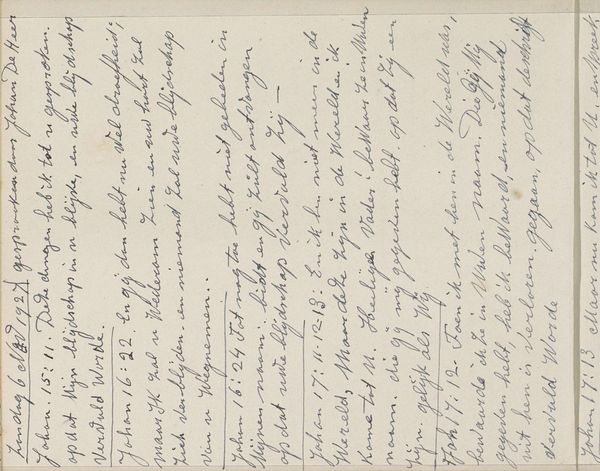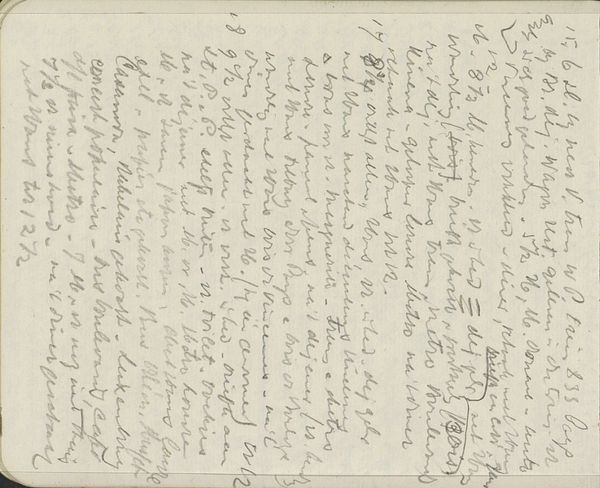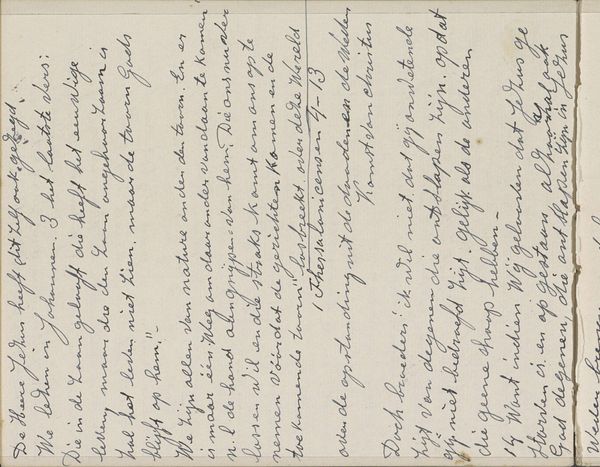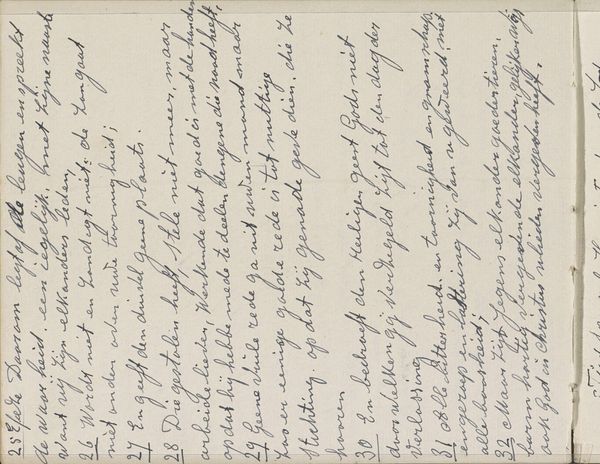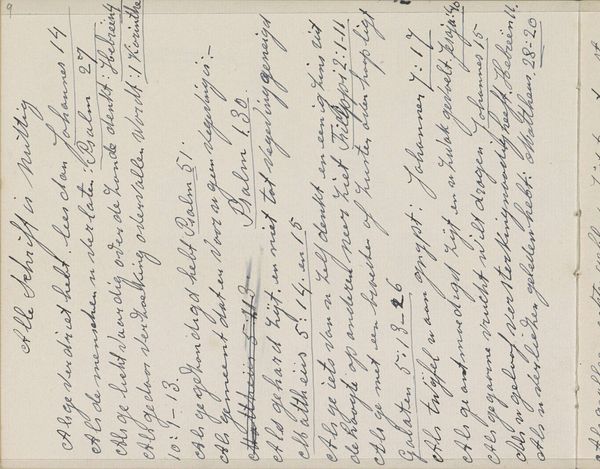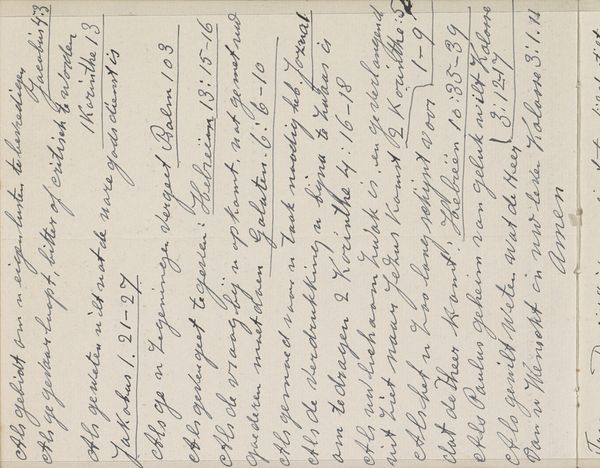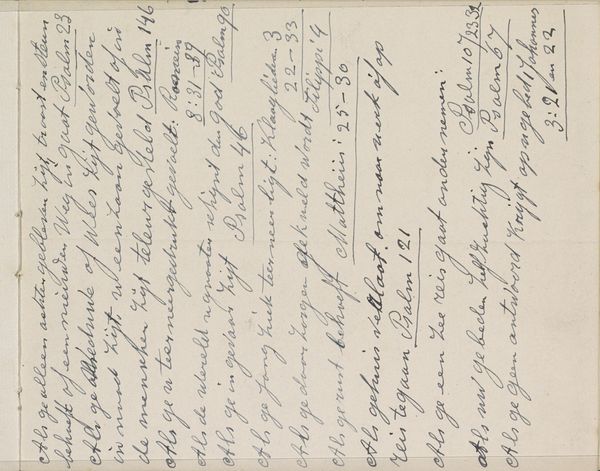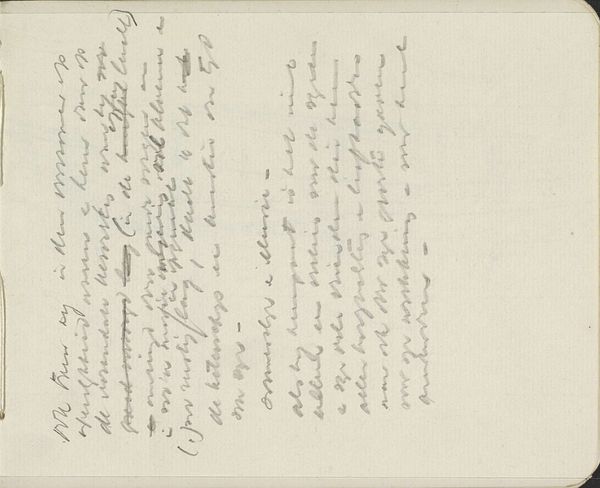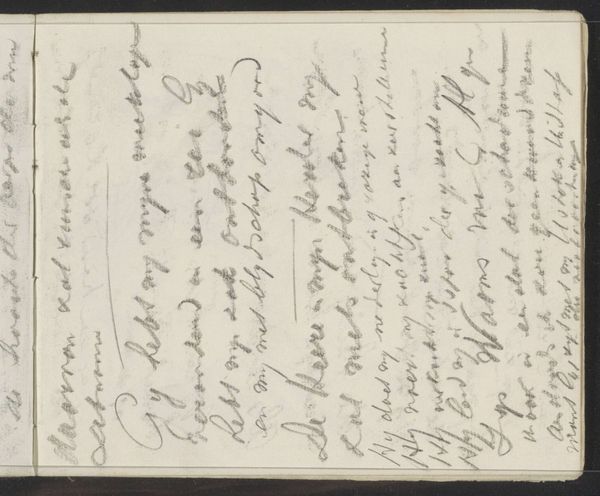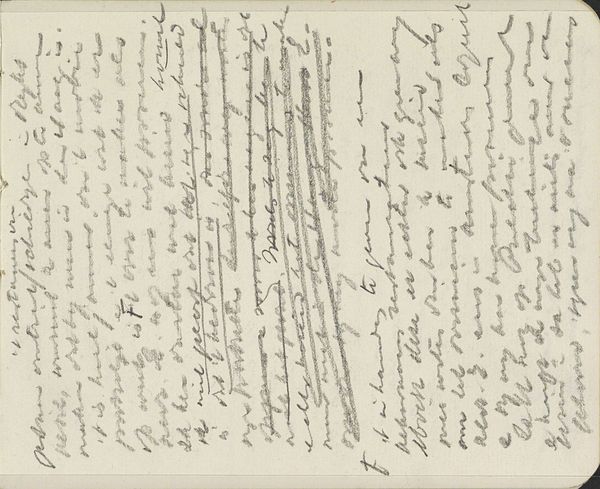
drawing, textile, paper, ink, pen
#
drawing
#
hand written
#
hand-lettering
#
hand drawn type
#
hand lettering
#
textile
#
paper
#
personal sketchbook
#
ink
#
hand-written
#
hand-drawn typeface
#
folk-art
#
pen work
#
sketchbook drawing
#
pen
#
sketchbook art
#
calligraphy
Copyright: Rijks Museum: Open Domain
Curator: Here we have "Bijbelverzen," or "Bible Verses," created between 1906 and 1948 by Marie Jordan. This drawing employs ink on paper, incorporating elements of both folk art and calligraphy. Editor: My first impression is of intimacy, like peering into a personal sketchbook. The handwriting has such a unique flow, yet the cramped nature of the verses evokes a sense of urgency or deep contemplation. It’s intriguing, but I feel a disconnect without knowing the specific verses or the language. Curator: The drawing’s power lies in Jordan’s deliberate use of simple materials. The humble pen and ink transform into something reverential. Consider the social context: folk art often serves as a powerful, accessible form of expression for individuals who may lack formal artistic training, offering insight into personal spirituality and daily life. This would be even more insightful were the original text available as an additional metadata point for reference. Editor: Yes, but the intrinsic visual rhythm also cannot be understated. See the variations in line thickness that create this textured landscape, an interaction between the dark solidity of ink and the light porous surface. There’s a visual harmony in the work despite its textual nature, and these artistic choices shape our immediate perception. Curator: I think framing it primarily as a “visual” piece overlooks the embodied labor. The hand-lettering signifies countless hours of practice, devotion and reflection, transforming words into a visual mantra that provides comfort through direct physical labor. The material becomes charged with a personal and spiritual meaning through Jordan's efforts. Editor: The deliberate placement, and spatial balance achieved between words and page creates rhythm; in semiotic terms the overall texture created can be read as Jordan’s hand expressing specific convictions; but ultimately these artistic choices lead the viewer toward this deeply introspective encounter. It’s almost devotional in essence. Curator: Agreed, and studying works such as this can help to democratize art. By recognizing value in folk traditions and everyday practice, and recognizing that folk practice and artistry isn’t primitive, we break down elitist notions surrounding who can be a producer or purveyor of quality artwork. Editor: This work is not only about accessing inner faith; instead, it asks the audience to see how even ordinary penmanship—via ink on paper—holds transformative ability and power if viewed consciously. It definitely made me stop and reflect, so I would say it does its job.
Comments
No comments
Be the first to comment and join the conversation on the ultimate creative platform.
